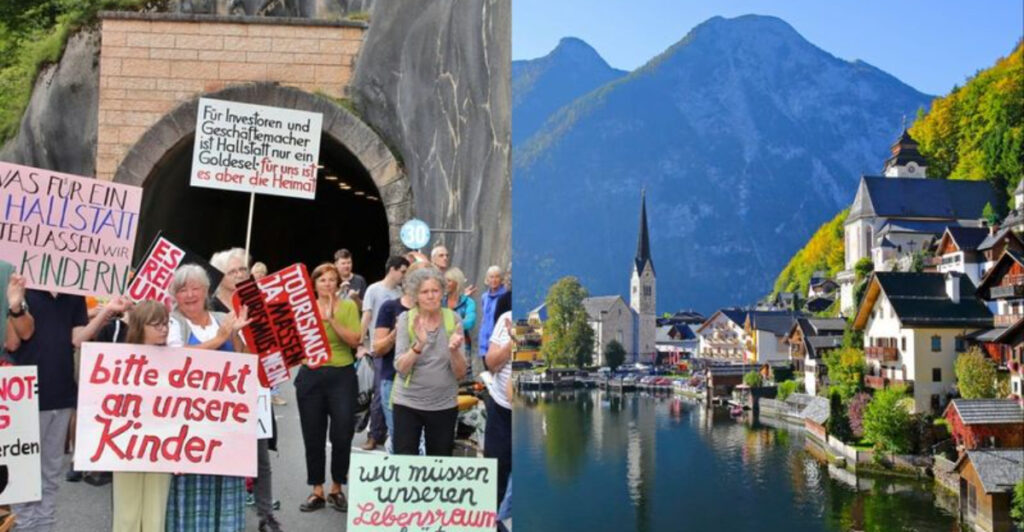In an era where tourism often overtakes small communities, some towns have decided to push back. These 15 small towns have taken unique approaches to manage or reduce the impact of tourism, aiming to preserve their cultural identity and natural beauty. From legislation to community-driven initiatives, these towns have shown resilience and creativity in protecting their heritage.
Hallstatt, Austria
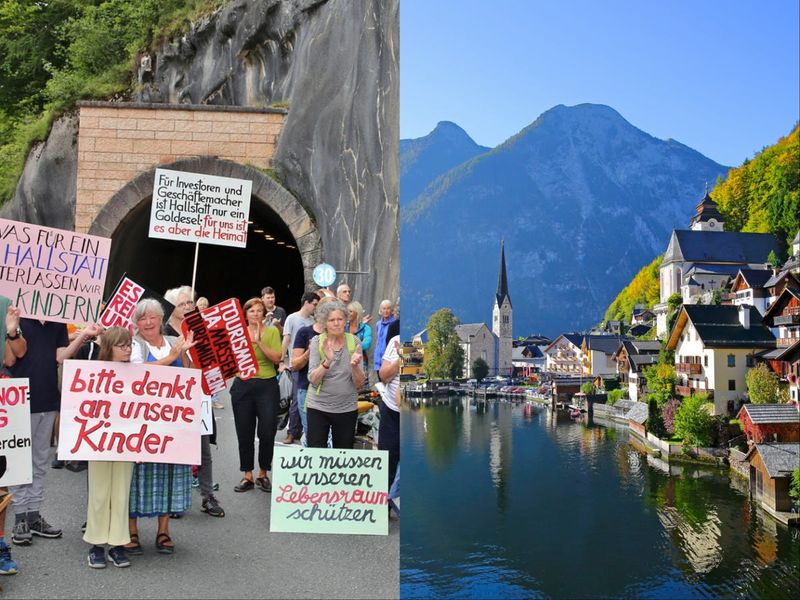
Nestled by the serene waters of a dazzling lake, Hallstatt is a town where locals have taken a stand against overwhelming tourism. Known for its picturesque setting, this Austrian gem was once overcrowded with day-trippers and tour buses. Now, Hallstatt has implemented restrictions on bus entry and visitor numbers, allowing peace to return to its cobblestone streets.
The locals’ determination to maintain their village’s tranquility is admirable. By prioritizing residents’ quality of life over tourism revenue, Hallstatt is successfully reclaiming its charm. A shining example of community-driven change, Hallstatt sets a precedent for other tourist-heavy towns.
Cinque Terre, Italy
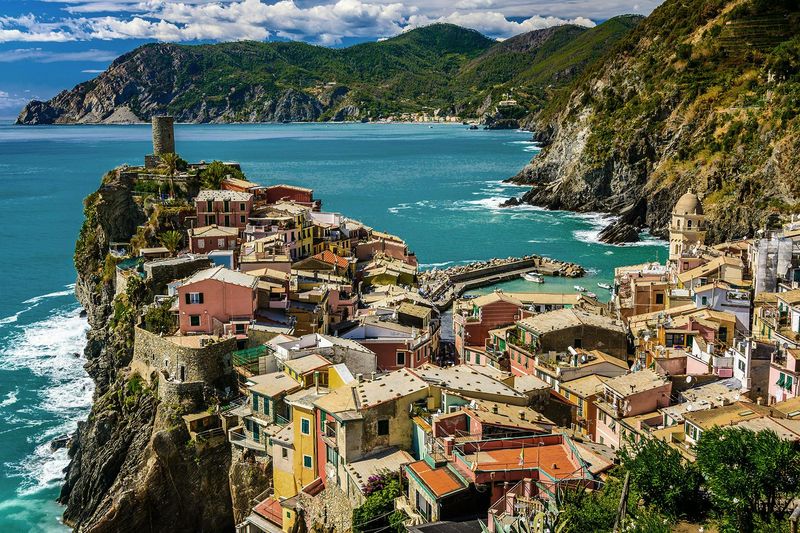
Cinque Terre’s breathtaking coastal villages have long been a magnet for tourists, but this Italian destination is now setting limits. To protect its fragile environment and preserve its unique culture, Cinque Terre has restricted visitor numbers and implemented a ticketing system.
This proactive approach helps manage the crowds while ensuring the sustainability of the area. Locals are passionate about maintaining their rich heritage and pristine landscapes. By taking control of the influx of tourists, Cinque Terre is safeguarding its identity, proving that sometimes less is more when it comes to tourism.
Barcelona, Spain

Barcelona, though not a small town, has been fighting the battle against mass tourism with fervor. This vibrant city has introduced strict regulations on short-term rentals and Airbnb properties, aiming to curb the flood of visitors.
The residents have long voiced concerns about losing their city’s essence to tourism. By supporting local businesses and prioritizing community needs, Barcelona is making strides in reclaiming its neighborhoods. This bold move showcases the city’s commitment to preserving its cultural identity while balancing the economic benefits of tourism.
Hvar, Croatia
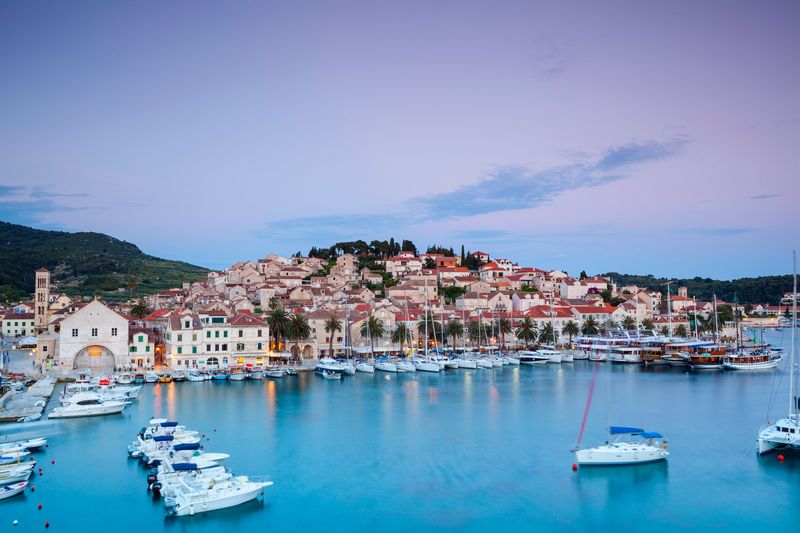
Hvar, known for its stunning beaches and historic architecture, has taken a firm stance against disruptive tourism. Faced with overcrowding and unruly behavior, the local government introduced fines and rules to maintain order.
This picturesque island is determined to protect its environment and community. By enforcing these measures, Hvar ensures that visitors respect the local way of life. The commitment to preserving its charm and natural beauty is evident, making Hvar a pioneer in sustainable tourism management.
Santorini, Greece
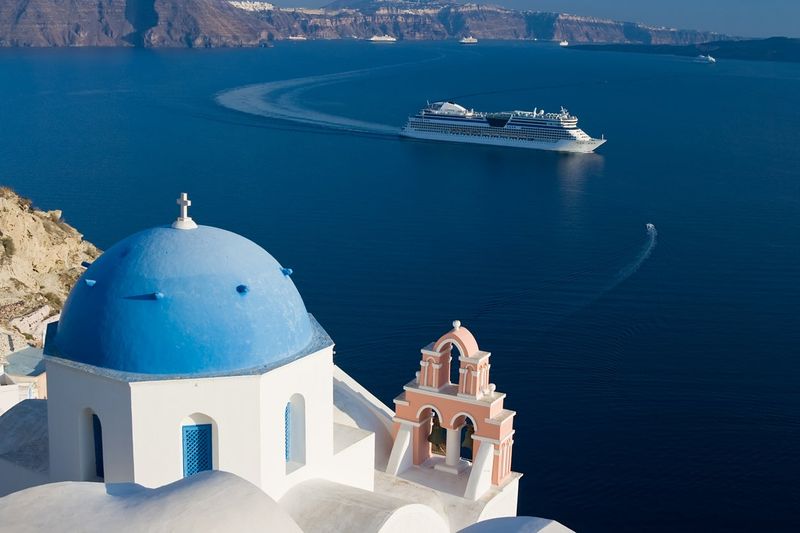
Santorini, with its iconic whitewashed buildings and azure domes, has always been a tourist hotspot. However, the local government has taken steps to limit cruise ship arrivals and regulate visitor numbers.
This initiative aims to prevent the island from being overwhelmed by tourists, allowing its natural beauty and cultural heritage to shine. By focusing on quality over quantity, Santorini is managing to retain its allure while offering a more authentic experience. This strategy highlights the importance of sustainable practices in preserving beloved destinations.
Kyoto, Japan
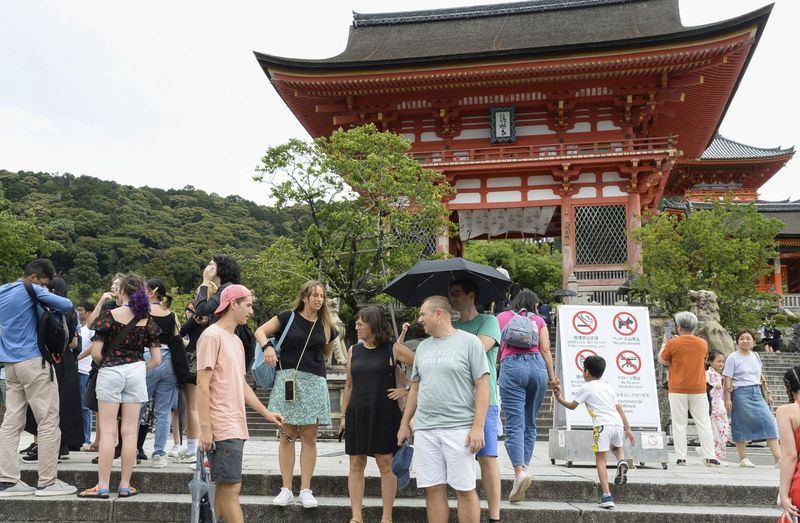
Kyoto, a city with profound historical significance, has been grappling with overtourism impacting its cultural sites. In response, the city has introduced measures such as promoting off-peak travel and limiting access to sensitive areas.
Locals are actively involved in these initiatives, ensuring that Kyoto’s heritage remains untouched. By fostering a respectful tourism culture, Kyoto is preserving its timeless beauty. This approach benefits both visitors and residents, as it maintains the city’s unique charm while reducing pressure on historical landmarks.
Amsterdam, Netherlands
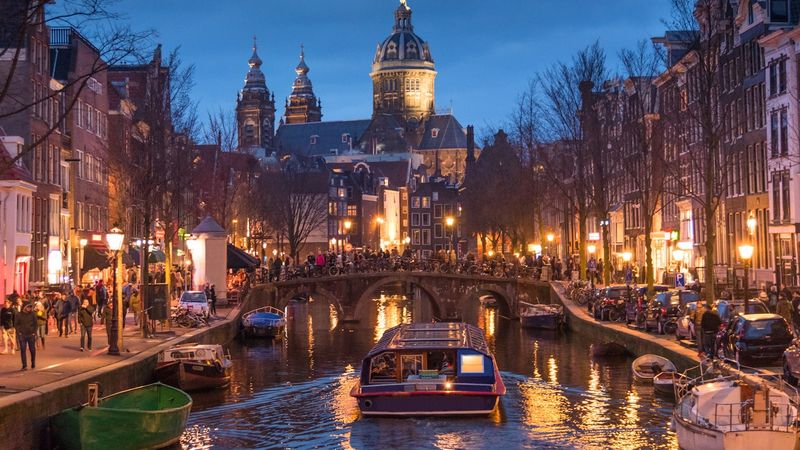
Amsterdam, famous for its canals and artistic heritage, is pushing back against the tide of mass tourism. The city has introduced a campaign to encourage responsible behavior among visitors and limit the expansion of tourist-centric shops.
By focusing on improving the quality of life for its residents, Amsterdam is fostering a more balanced relationship with tourism. This strategy not only protects the city’s cultural landmarks but also ensures that the local community thrives. Amsterdam’s innovative approach serves as a model for urban centers facing similar challenges.
Bhutan

Bhutan has long followed a unique tourism policy known as “High Value, Low Impact.” By imposing a daily fee on visitors, the country ensures that tourism does not disrupt its cultural and environmental harmony.
This approach emphasizes preserving Bhutan’s pristine landscapes and rich traditions. Visitors are encouraged to engage deeply with the local culture rather than merely passing through. Bhutan’s commitment to sustainability is evident, as it carefully balances welcoming tourists with protecting its heritage. This model highlights the possibilities of tourism enhancing, rather than detracting from, a nation’s identity.
Palawan, Philippines
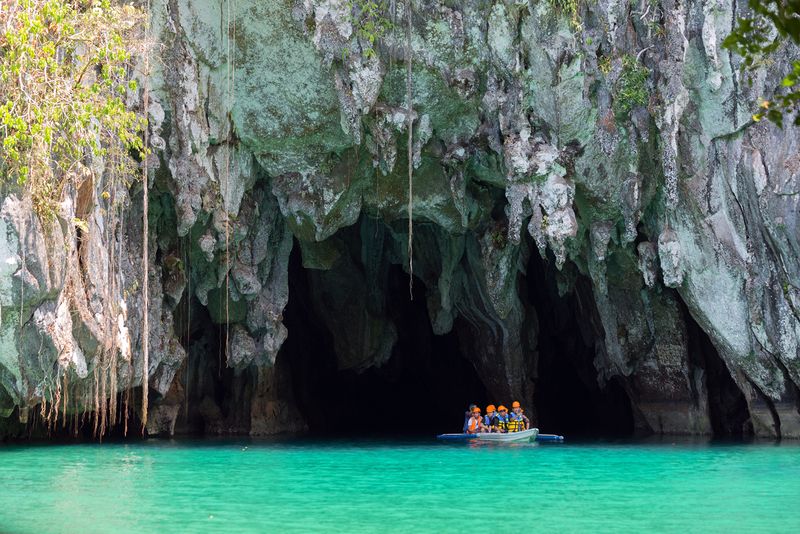
Palawan, often hailed as the last ecological frontier of the Philippines, is dedicated to preserving its natural wonders. The local government has imposed strict environmental regulations and limited tourist access to sensitive areas such as the Underground River.
These measures are crucial in safeguarding Palawan’s biodiversity and maintaining its breathtaking scenery. By prioritizing conservation, Palawan ensures that its natural beauty remains unspoiled for future generations. This commitment to sustainability makes Palawan a leader in eco-friendly tourism practices, offering a haven for nature lovers who respect the environment.
Venice, Italy
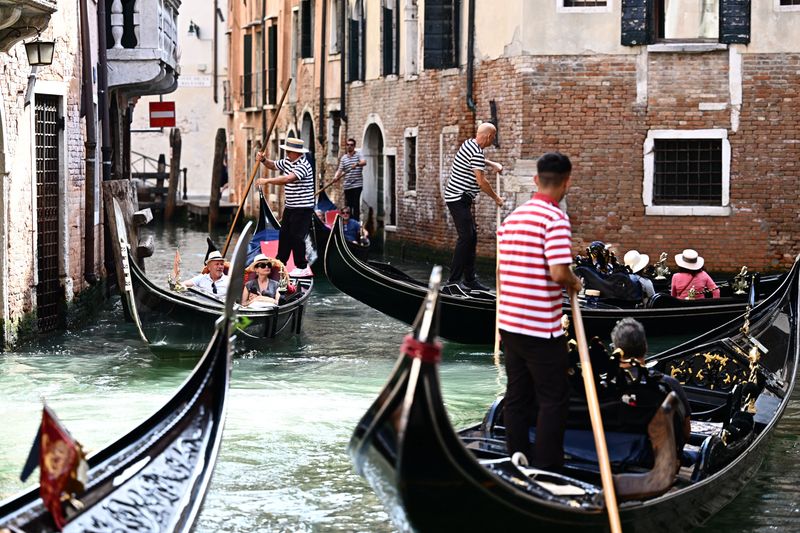
Venice, renowned for its historic canals and architecture, faces the threat of being overwhelmed by tourists. In response, the city has implemented measures such as entrance fees during peak times and restrictions on cruise ship entries.
These actions aim to alleviate the strain on Venice’s infrastructure and preserve its cultural heritage. By managing visitor flow, Venice is taking a crucial step in safeguarding its future. This reflects a growing awareness of the need for balance between tourism and preserving the essence of beloved destinations.
Reykjavik, Iceland
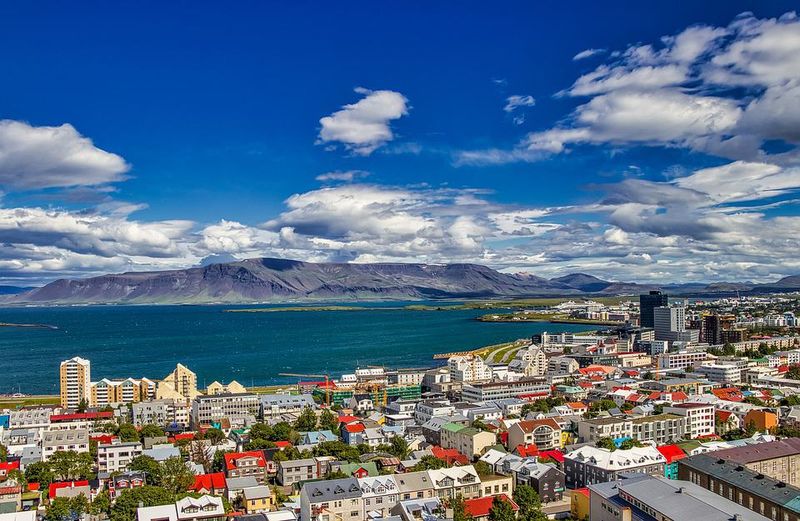
Reykjavik, Iceland’s vibrant capital, has been proactive in addressing the challenges of increased tourism. The city promotes sustainable travel practices and supports local businesses to ensure that tourism benefits the community.
Reykjavik’s strategy includes educating visitors about responsible behavior and protecting natural resources. This approach fosters a harmonious relationship between tourists and residents. By prioritizing sustainability, Reykjavik is preserving its unique character while welcoming visitors from around the world. This balance is key to the city’s success in managing tourism effectively.
Machu Picchu, Peru
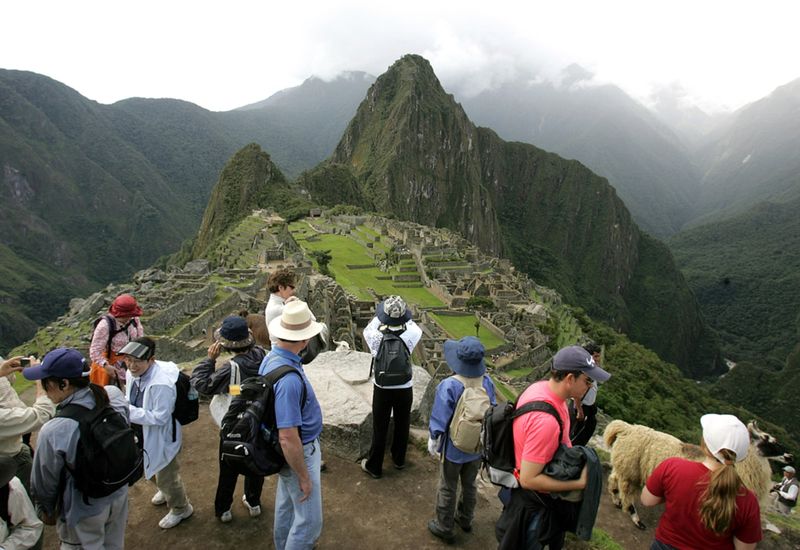
Machu Picchu, a world-renowned archaeological site, has felt the impact of overwhelming tourist numbers. To protect this historical treasure, Peru has implemented a ticketing system that limits the daily number of visitors.
This measure is essential in preserving the site’s structural integrity and cultural significance. By controlling the flow of tourists, Machu Picchu remains an awe-inspiring destination without compromising its historical legacy. These efforts underscore the importance of mindful tourism in maintaining the world’s cultural heritage for future generations.
Dubrovnik, Croatia
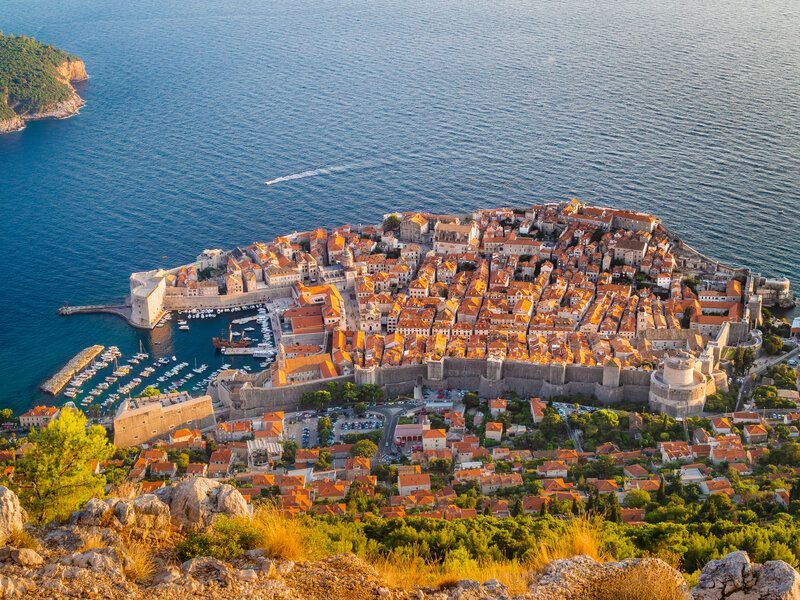
Dubrovnik, with its stunning city walls and medieval charm, has taken a stand against over-tourism. The city has capped cruise ship entries and is working on crowd management strategies to maintain its livability.
By focusing on the well-being of its residents, Dubrovnik is preserving its unique ambiance while welcoming visitors. This initiative reflects a broader trend of prioritizing sustainable tourism practices to protect cultural landmarks. Dubrovnik’s proactive approach ensures that its historical allure remains intact for generations to come.
Maui, Hawaii
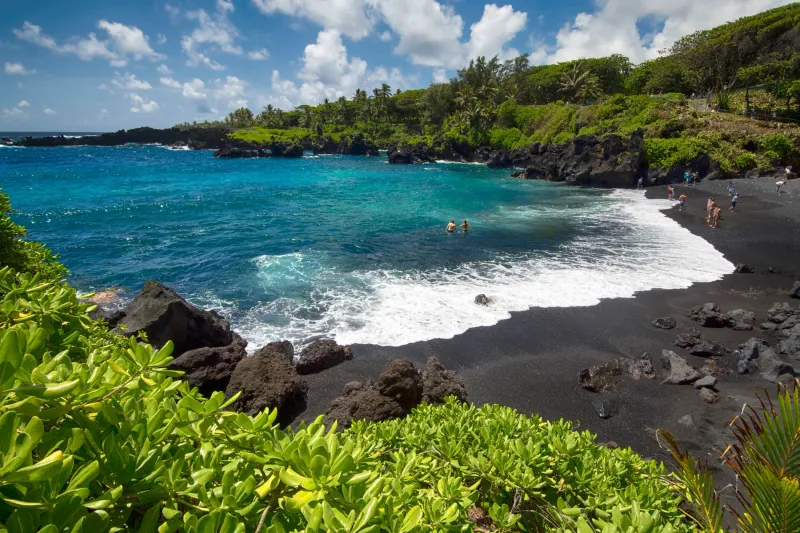
Maui, a paradise island, is committed to preserving its natural beauty and cultural heritage. To manage the influx of tourists, the local government has implemented strict environmental regulations and conservation efforts.
These initiatives are designed to protect Maui’s unique ecosystems and cultural sites, ensuring that they remain unspoiled. By emphasizing the importance of sustainability, Maui is creating a more balanced and respectful tourism industry. This dedication to conservation makes it a beacon for other destinations seeking to balance tourism with environmental stewardship.
Lofoten Islands, Norway

The Lofoten Islands, known for their dramatic scenery and cultural heritage, have embraced a sustainable approach to tourism. By promoting eco-friendly travel and supporting local businesses, the islands are managing visitor impact effectively.
This strategy ensures that the natural beauty and vibrant culture of the Lofoten Islands are preserved. The community’s commitment to sustainability is evident in their efforts to educate tourists and protect the environment. The Lofoten Islands serve as a model for how destinations can thrive while prioritizing ecological and cultural preservation.

